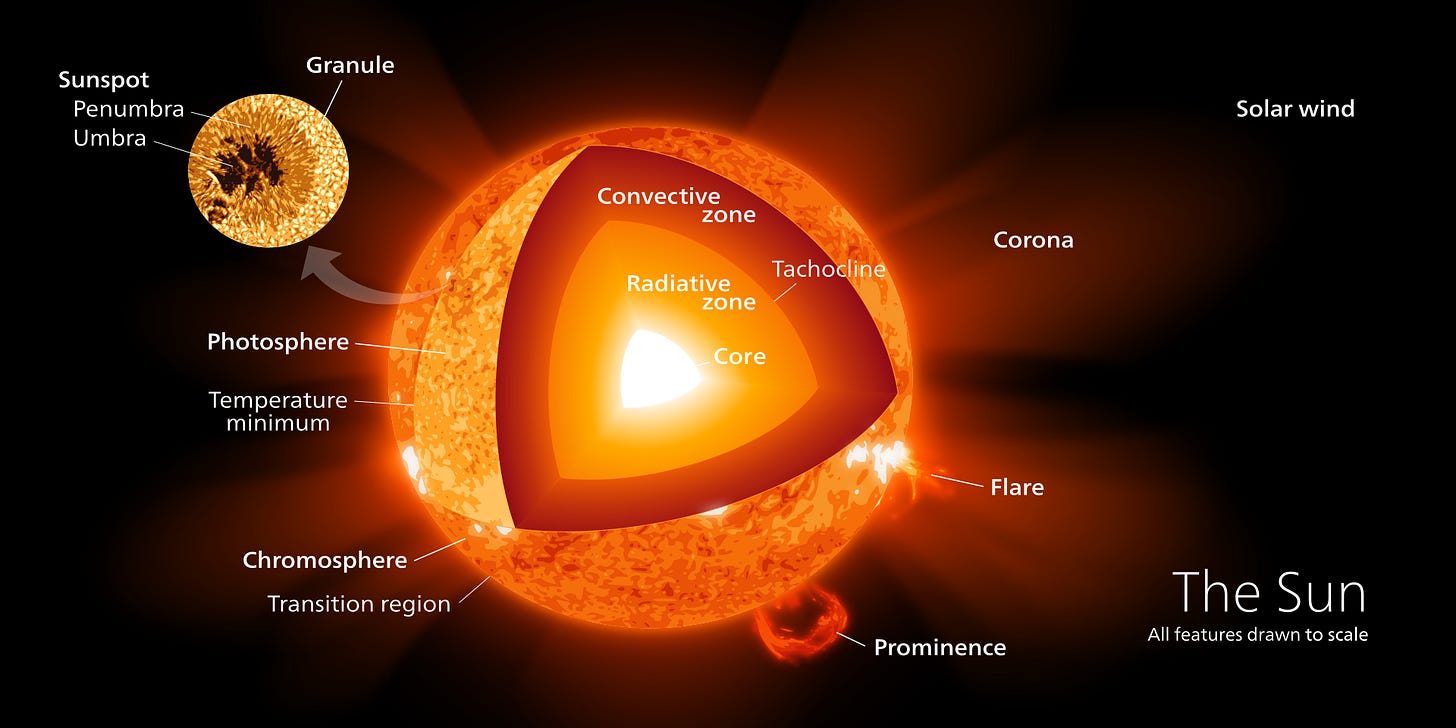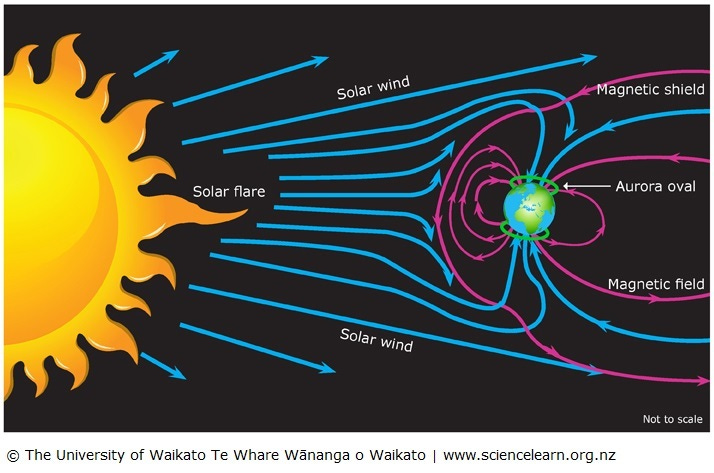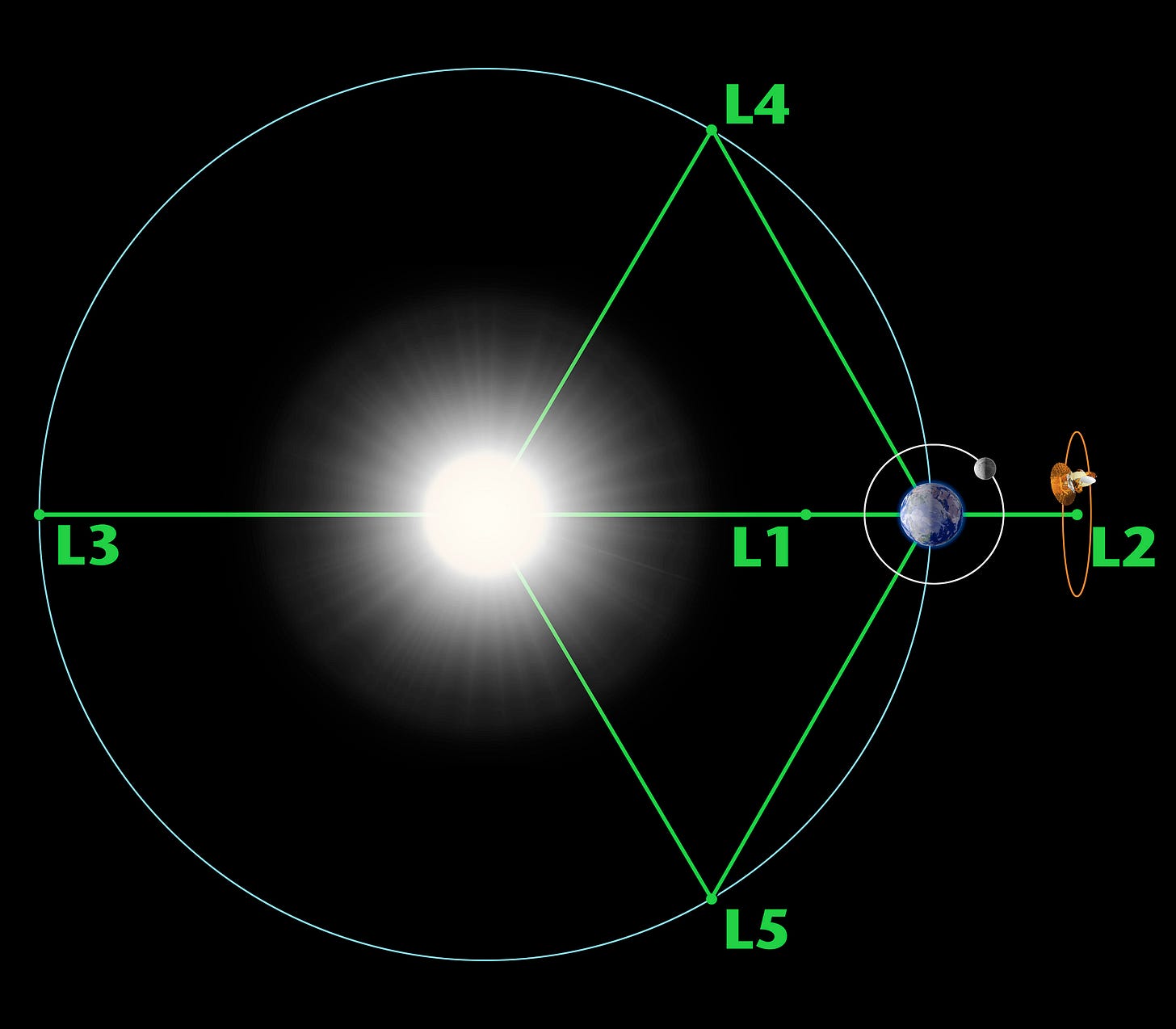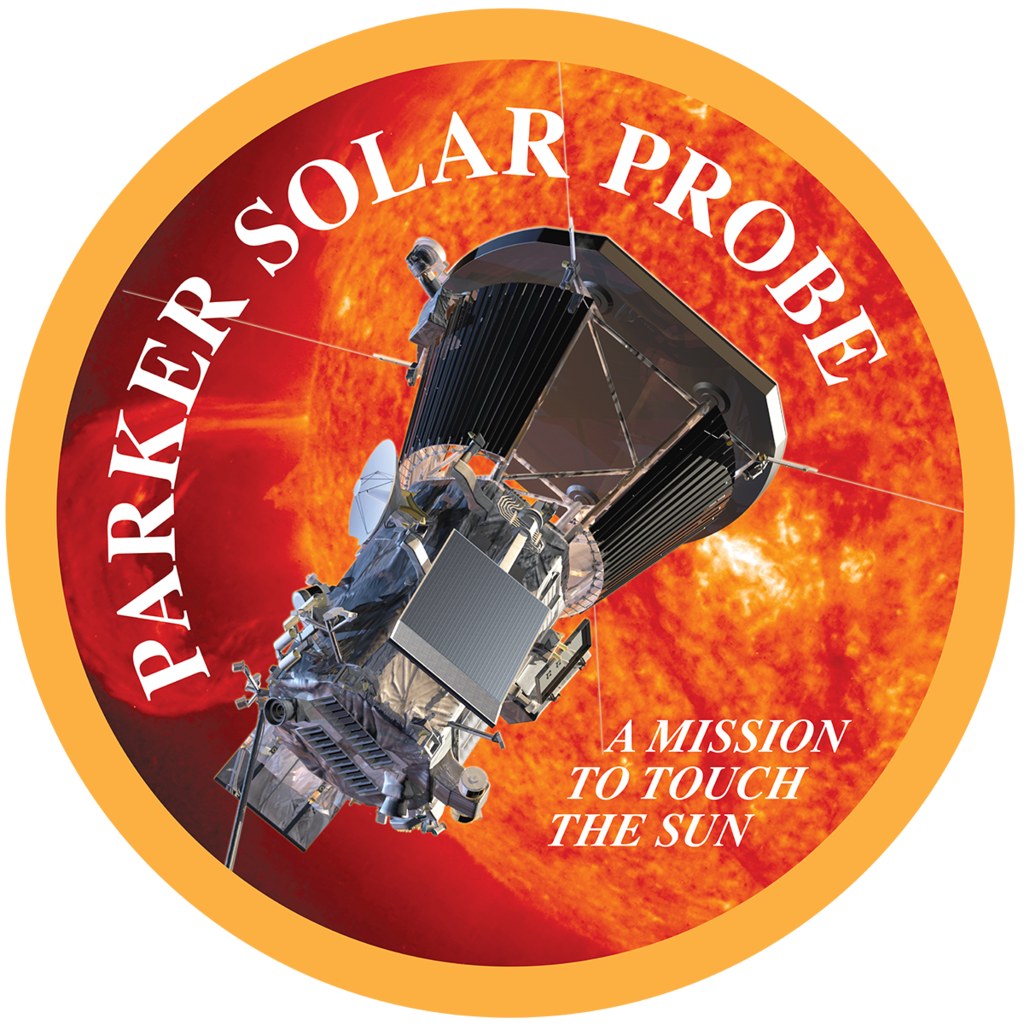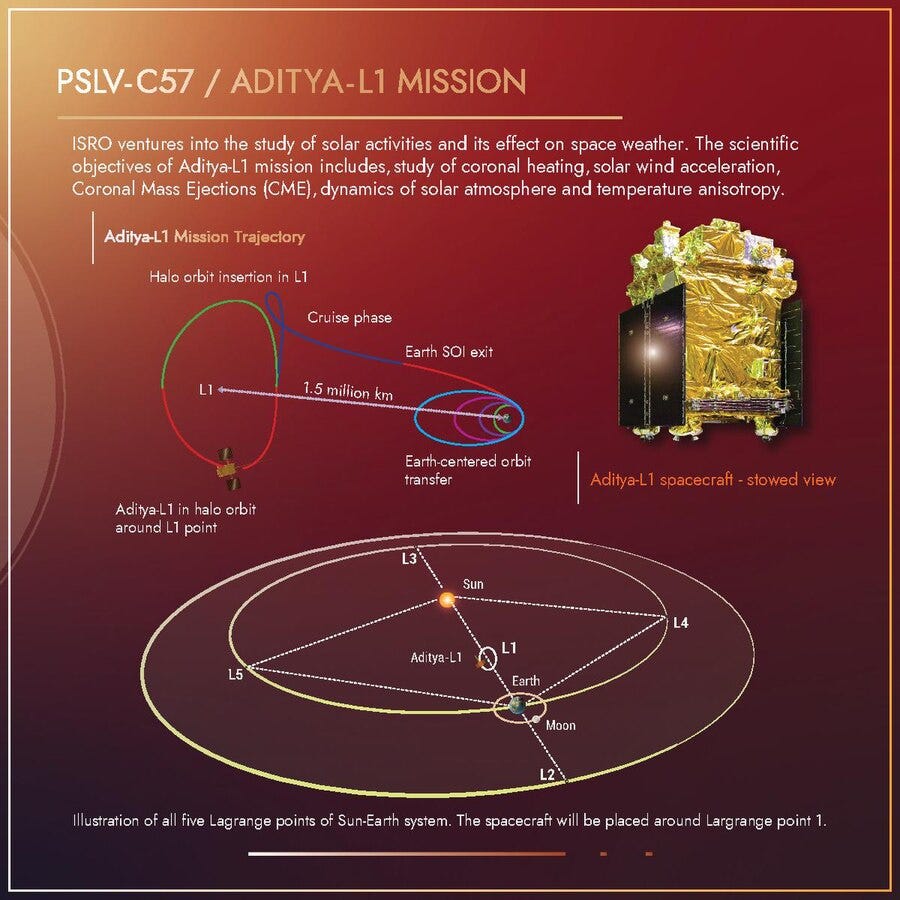Solar Space Missions
Illuminating the Secrets of Our Sun
The Sun, our life-sustaining cosmic star, has captivated humanity's curiosity for millennia. Its fiery presence dominates our daytime sky, casting warmth and light upon Earth. Yet, beneath its dazzling exterior lies an enigmatic realm of scorching temperatures, intricate magnetic fields, and dynamic phenomena that continue to elude full comprehension. To unravel the mysteries of the Sun and its profound influence on our solar system, humanity has embarked on a series of audacious solar space missions. In this comprehensive article, we will delve into the rationale behind these missions, the formidable challenges they face, the significance of Lagrange points, a survey of recent missions, and the invaluable findings that illuminate our understanding of our closest star.
Recently Indian Space Research Organisation (ISRO) launched its solar mission, Aditya L1. Aditya L1 is the first space-based Indian observatory which aims to study the Sun.
Why Solar Missions?
The Sun, a blazing ball of super-heated plasma, is the centerpiece of our solar system. Its radiance fuels life on Earth, governs the dynamics of celestial bodies, and exerts a powerful influence on our technological infrastructure. Solar missions are undertaken for several compelling reasons:
Understanding Space Weather: The Sun is the primary driver of space weather, including solar flares, coronal mass ejections (CMEs), and solar wind. These solar phenomena can profoundly affect Earth's magnetic field, communication systems, and power grids. Solar missions aim to decipher the mechanisms behind these events, enhancing our ability to predict and mitigate their impact on Earth.
Probing Solar Dynamics: The Sun's interior is a cauldron of thermonuclear reactions that generate energy through the fusion of hydrogen into helium. Solar missions seek to explore the processes that govern these reactions, shedding light on the Sun's structure, energy production, and evolution.
Magnetic Mysteries: The Sun's magnetic field is intricate and dynamic, driving phenomena such as sunspots, solar flares, and CMEs. Solar missions aim to decipher the complexities of the Sun's magnetic field, offering insights into its behavior and influence on solar activity.
Studying Solar Wind: The solar wind, a continuous stream of charged particles emanating from the Sun, affects the solar system's outer reaches. Solar missions help elucidate the solar wind's properties, including its speed, density, and composition, and their implications for planetary environments.
Advancing Space Exploration: Solar missions serve as vital precursors to broader space exploration efforts. Understanding the Sun's environment is essential for planning missions to the Moon, Mars, and beyond, as it provides insights into radiation hazards and navigation challenges posed by interplanetary travel.
Challenges Faced by Solar Missions
Solar missions, while promising invaluable insights, confront a series of formidable challenges:
Extreme Temperatures: Proximity to the Sun exposes spacecraft to extreme temperatures. The Sun's surface temperature exceeds 5,500 degrees Celsius (9,932 degrees Fahrenheit), while the corona, its outer atmosphere, can reach temperatures of millions of degrees. Solar missions require advanced thermal shielding and cooling systems to endure these conditions.
Radiation Hazards: The Sun emits a barrage of high-energy radiation, including harmful ultraviolet and X-rays. Spacecraft must be equipped with radiation-hardened components to protect onboard instruments and systems.
Communication Lag: The vast distance between the Sun and Earth results in significant communication delays. Real-time control of missions becomes challenging, necessitating autonomous systems for decision-making.
Solar Wind Impact: The solar wind, comprised of charged particles, poses potential hazards to spacecraft. Solar missions must account for these particles and their effects on instrumentation and navigation.
Precise Navigation: Accurate navigation is critical for solar missions, particularly for those targeting specific solar events or phenomena. Minor errors in trajectory can result in missed scientific opportunities.
What are Lagrange Points?
Lagrange points, named after French mathematician Joseph-Louis Lagrange, are regions in space where the gravitational forces of two large bodies, such as the Earth and the Sun, produce equilibrium points. These points are crucial for solar missions as they offer stable positions where spacecraft can maintain a fixed relative position with respect to the Earth and the Sun. These points serve as ideal vantage points for solar observatories, enabling continuous observations of the Sun without the need for complex orbital adjustments or spending more fuel.
L1 Lagrange Point:
Location: L1 is situated on the line defined by the Earth and the Sun, approximately 1.5 million kilometers (about 0.93 million miles) from Earth, directly between the Earth and the Sun.
Significance:
L1 is a prime location for solar observatories such as the Solar and Heliospheric Observatory (SOHO) and the Parker Solar Probe. It offers a continuous view of the Sun, allowing for uninterrupted monitoring of solar activity and the solar wind.
L2 Lagrange Point:
Location: L2 is also positioned on the line defined by the Earth and the Sun but is located on the opposite side of the Earth from the Sun. It is approximately 1.5 million kilometers (about 0.93 million miles) beyond Earth.
Significance:
L2 serves as an ideal location for various astronomical observatories, including the James Webb Space Telescope (JWST). It provides a stable position relative to both the Earth and the Sun, making it suitable for observing distant celestial objects.
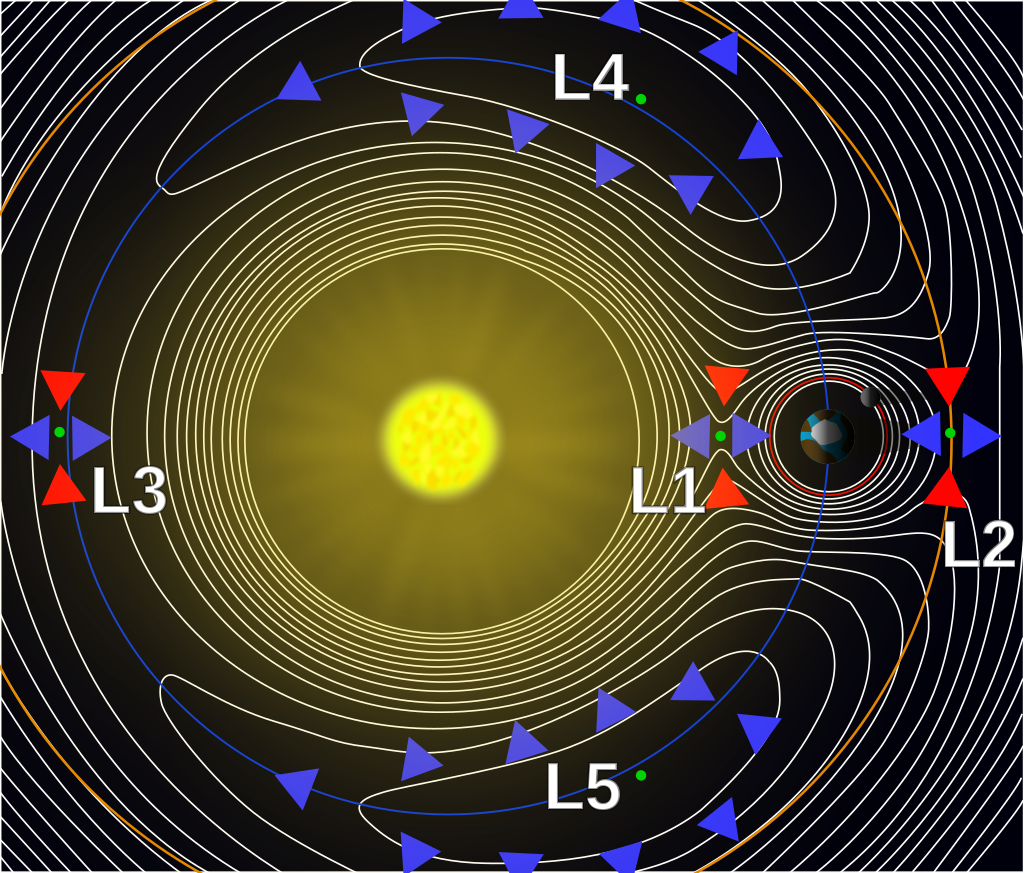
L3 Lagrange Point:
Location: L3 is positioned on the line formed by the Earth and the Sun, but it is on the opposite side of the Sun from the Earth. This location makes it challenging for most missions due to communication and power constraints.
Significance:
L3 has not been used for significant missions due to the difficulties associated with its location, including limited communication with Earth.
L4 and L5 Lagrange Points:
Location: L4 and L5 are located roughly 60 degrees ahead of and behind the Earth in its orbit around the Sun, respectively. They are approximately 1.5 million kilometers (about 0.93 million miles) from Earth.
Significance:
L4 and L5 are known as Trojan points. They form equilateral triangles with the Earth and the Sun, creating stable regions in space.
These points are attractive for the study of asteroids and comets, as objects placed at L4 and L5 remain in stable orbits around these points. The presence of Trojans, or groups of asteroids, has been observed at these points in the solar system.
Applications of L4 and L5:
Study of asteroids and comets: L4 and L5 points provide stable locations for monitoring and tracking objects in their orbits around these Lagrange points.
Continuous observations: These points offer continuous views of the Earth-Sun system, making them suitable for missions requiring uninterrupted solar observations.
Future space habitats: Some researchers have proposed using L4 and L5 as potential sites for future space habitats or as waystations for lunar or Mars missions due to their stability.
In summary, the five Lagrange points are strategically located regions in space where gravitational forces create stable positions relative to the Earth and the Sun.
Recent Solar Missions
Solar missions have been at the forefront of scientific exploration in recent years. Below are some of the noteworthy missions dedicated to studying the Sun:
Parker Solar Probe (NASA): Launched in 2018, the Parker Solar Probe is on a mission to study the Sun's outer atmosphere, known as the corona. It will provide close-up observations of the Sun's environment and solar wind.
Solar Orbiter (ESA/NASA): Launched in 2020 by the European Space Agency (ESA) in collaboration with NASA, Solar Orbiter is designed to study the Sun's polar regions and its magnetic field. It will provide images and data that enhance our understanding of solar activity.
BepiColombo (ESA/JAXA): While primarily a mission to study Mercury, BepiColombo, launched in 2018, also observes the Sun and studies the effects of solar radiation on Mercury
Aditya L1 (ISRO): Launched in 2023, its main objectives are to observe the dynamics of the Solar upper atmosphere, that is chromosphere and corona. Study the in-situ particle and plasma environment, and provide data for the study of particle dynamics from the Sun. In addition, study the Physics of solar corona and its heating mechanism.
Hope you liked this article. Do let us know if you think any other benefits or challenges of solar missions.



